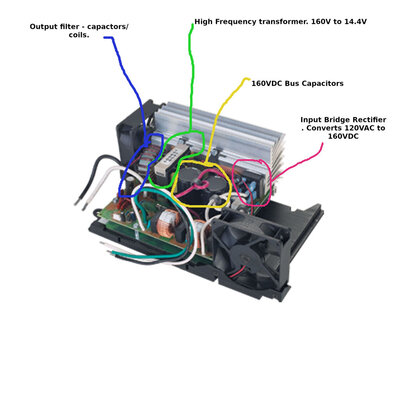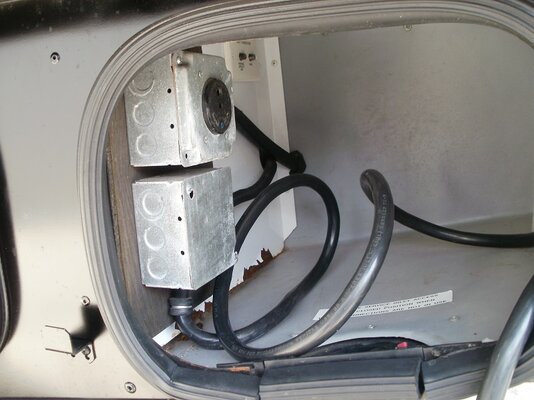Fox,
I am one of those guys with a case that has lots of really expensive meters in it. I save it for times like this. What I am going to suggest to you is that you lay out less than 30$us (about the price of a set of good test leads for my meters) and get a Kill-A-Watt. Model is unimportant, but I thing the current is 4400. It can tell you a lot that is important and a lot that most people will not understand. It will tell -by merely plugging it and a selecting buttons- what the generator is doing as far as frequency and voltage. If you can plug it in where your converter plugs in (you may need an extension cord) it can tell you what the converter is seeing. I hope this will answer your question.
In the case that it does not, call the techs are Progressive Dynamics and ask for help while you have the Kill-A-Watt in your hand. They are really vary nice people and understand that not everyone is a EE with lots of experience.
Matt
Odd, I was thinking almost the same thing yesterday, but was too lazy to type. Yes, get a puck type adapter................ Walmart has them on the shelf.
Plug it into the generator outlet in the shore cord compartment................... looks like this, more or less.
Then go and get a outlet tester from Harbor Freight, Home Depot, etc..............
Go ahead and get a good extension cord, 14 gauge or 12 gauge, and plug it into the puck adapter, and (with the generator running) take the tester and make sure you are getting lights that indicate 'correct", at the end of the extension cord. You know everything is wired correctly at this point. Go inside the RV and remove the front panel from the power panel, four brown screws.
If you used the tester and didn't get proper lights, say hot/neutral reversed, (SHUT DOWN THE GENERATOR) you will need to open the generator outlet receptacle and check the wires on the back to insure they are wired correctly, with the white and black wires on the silver and brass screws, and the ground on the ground pin screw.
Then remove the two hex head screws that hold the panel on that covers the area around the breakers on the upper left. (NO SHORE POWER OR GENERATOR POWER AT THIS POINT, MEANING DO NOT PLUG THE SHORE CORD INTO ANYTHING.)
Note, originally WBO will have wired the refrigerator and the power converter on the same breaker using a ferrule to combine the two wires on the breaker without "double tapping" the breaker. No telling what was done when the new converter was installed. I installed a short pigtail and then wire nutted the fridge and converter wires to the pigtail, as I had no ferrules to combine the wires.
Trace the white/black/green wires that come up from the converter to the breaker and the buss bars on the LH side near the breakers. DO not disturb the black and white wires going to the DC fuse panel on the left. Remove the wires from the breaker and buss bars, and install a plug end on them............
Green on the D shaped ground pin, white on the silver blade (usually wider than the other, and black on the brass blade)
Plug the Kill a Watt in the extension cord, read the volts and hz. then plug the converter into the Kill a Watt and check your DC voltage and see if it is working.
This bypasses everything else.
Lets see if it is charging now.
Charles





